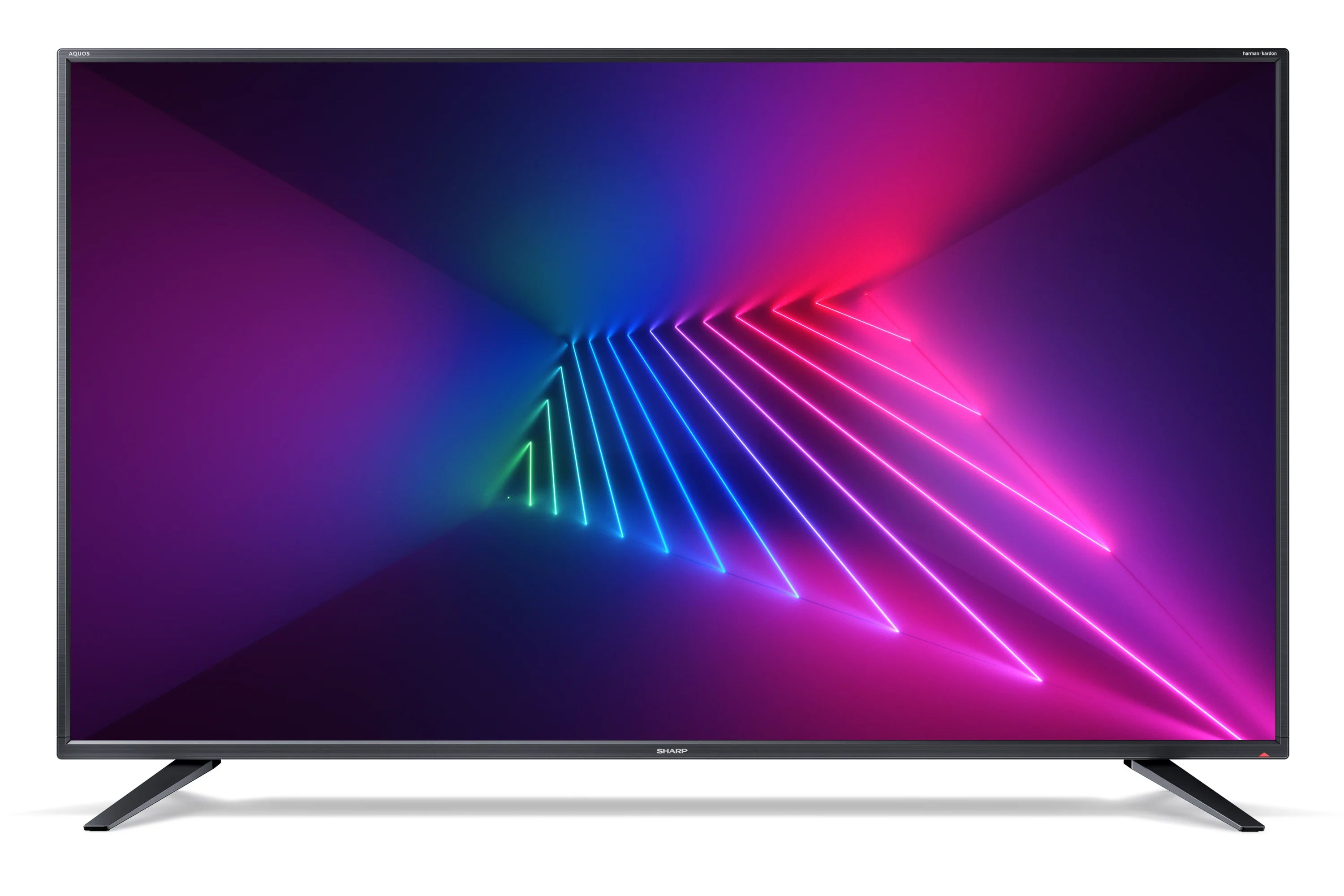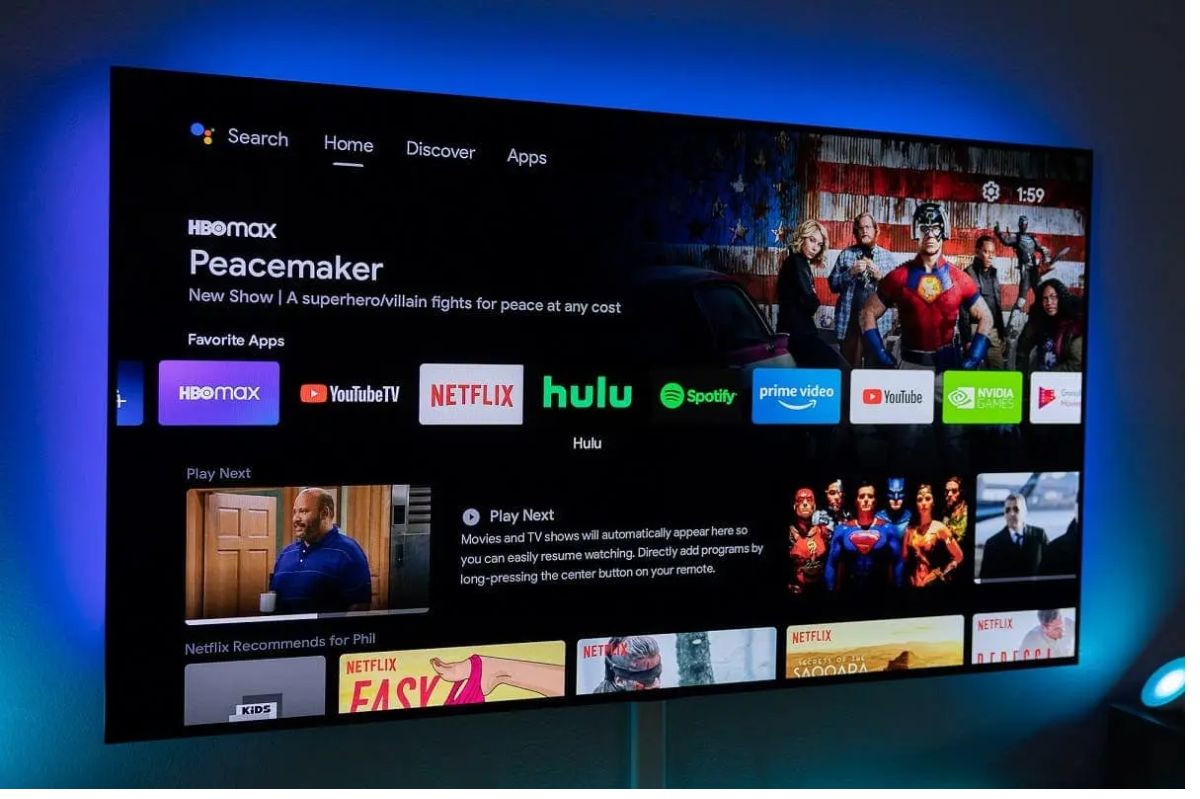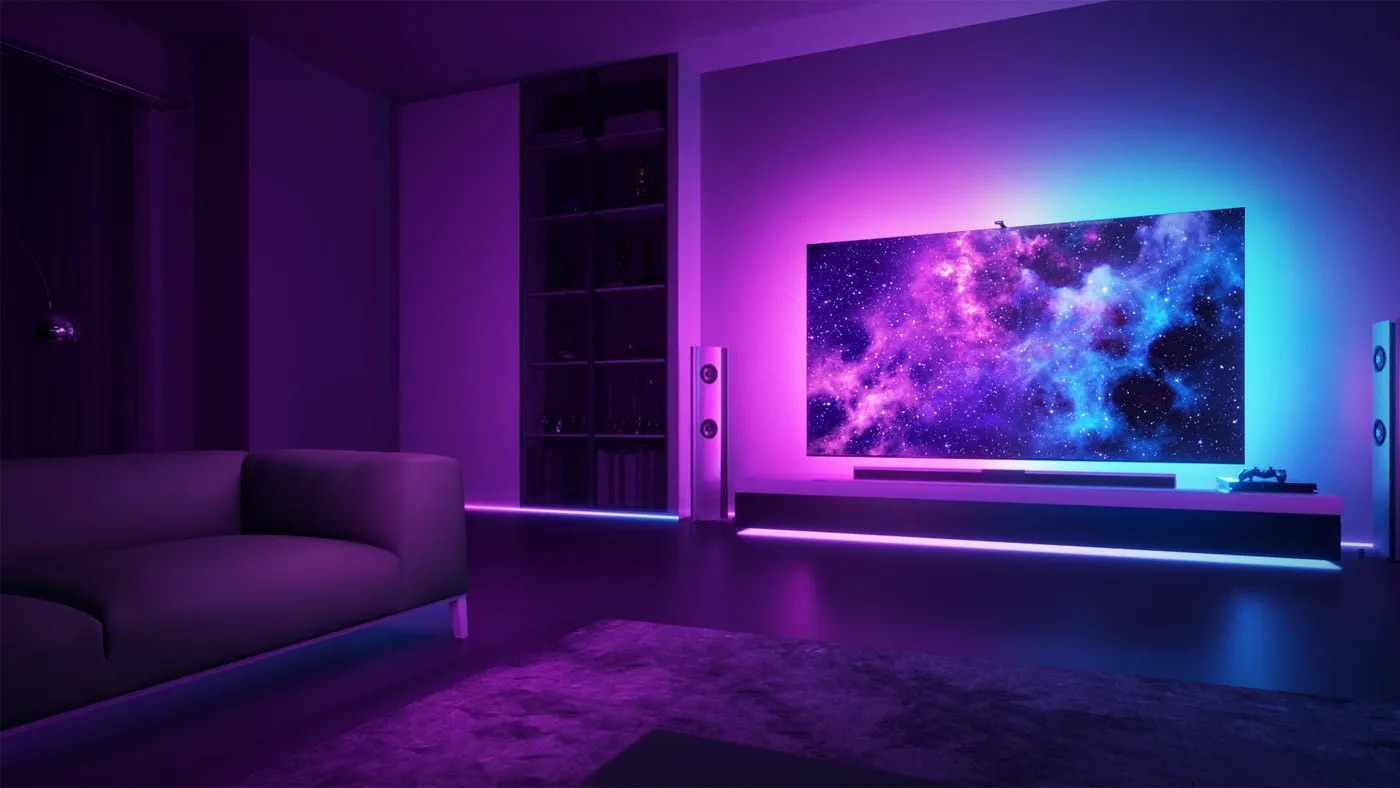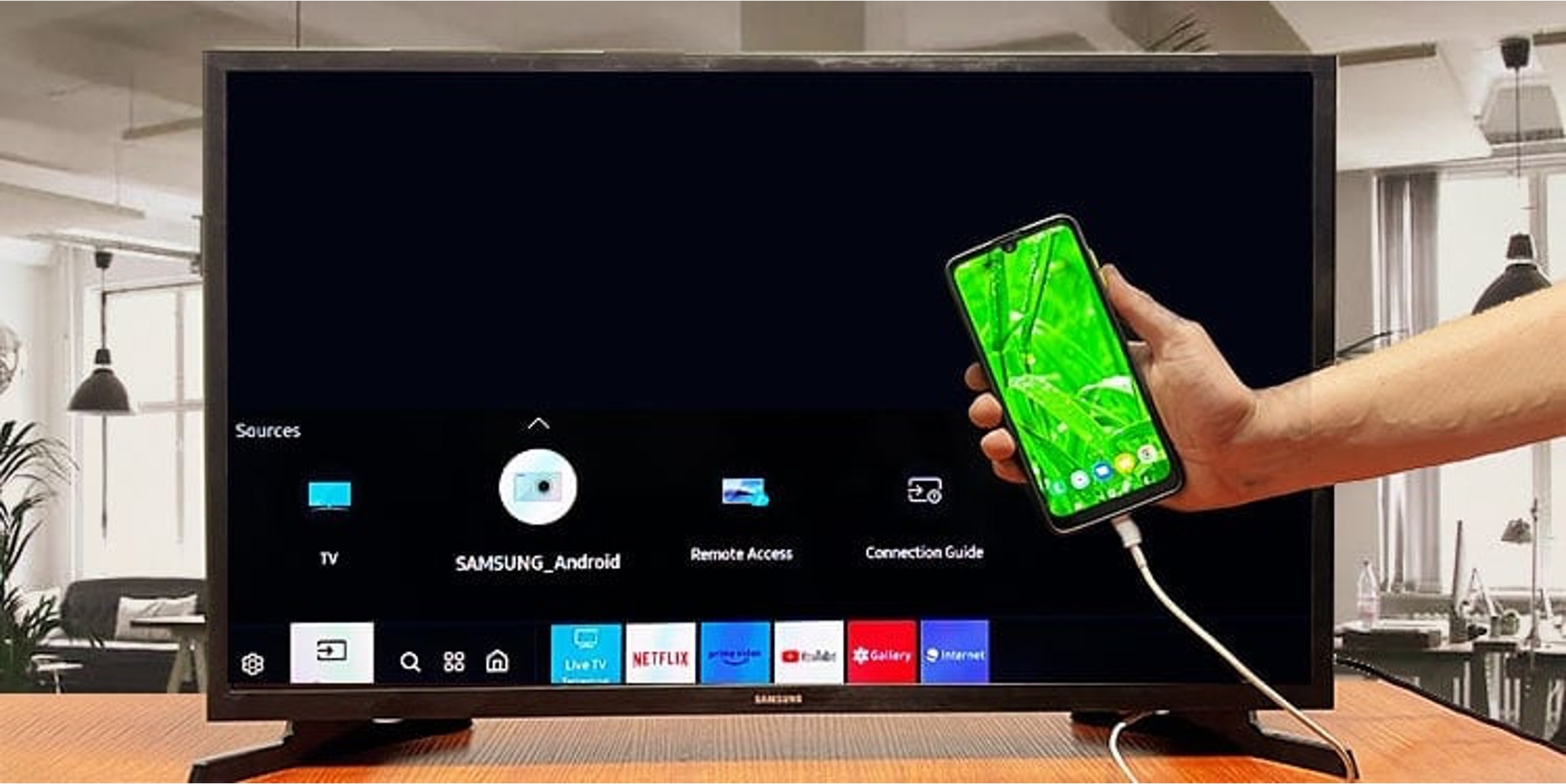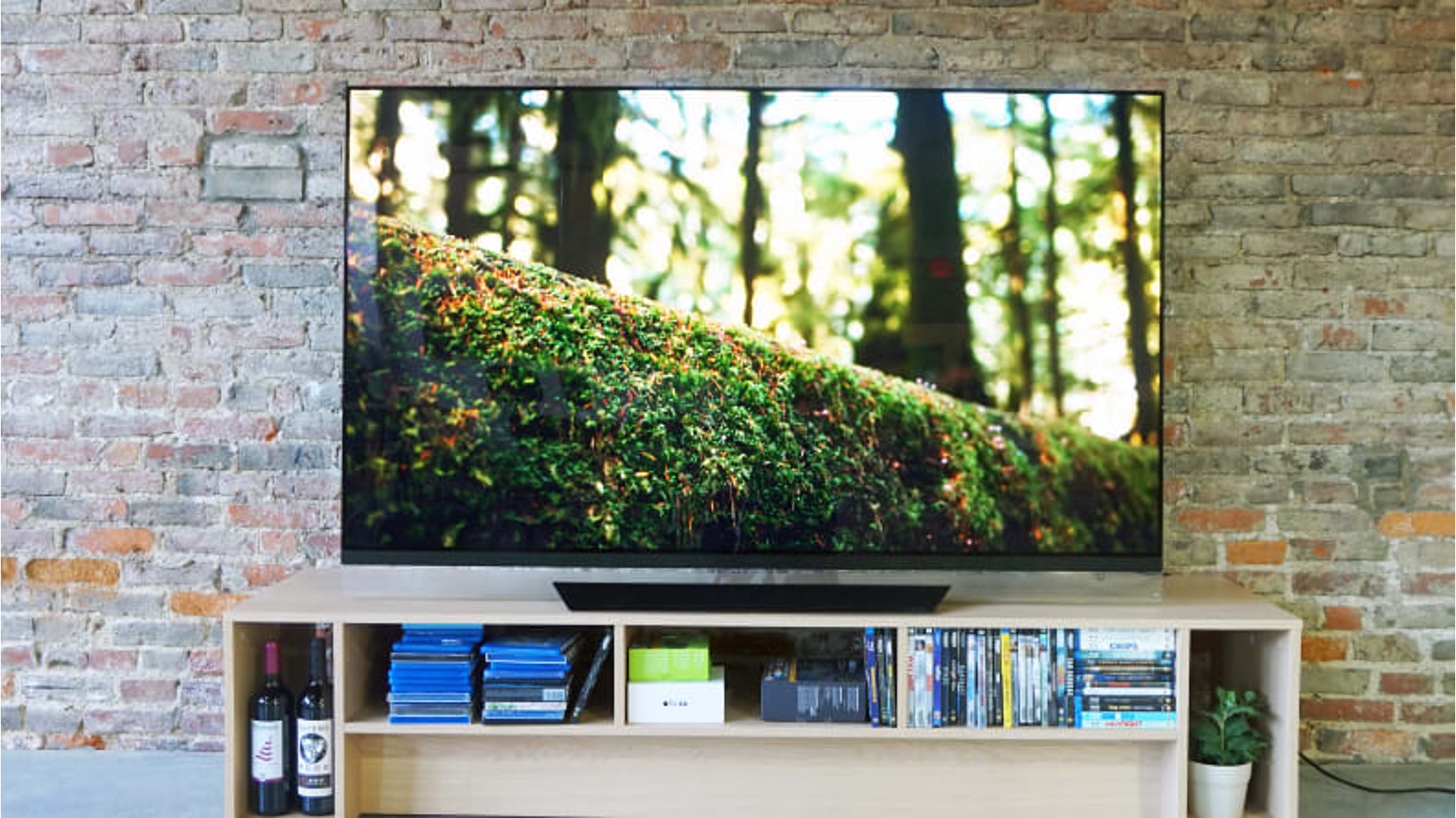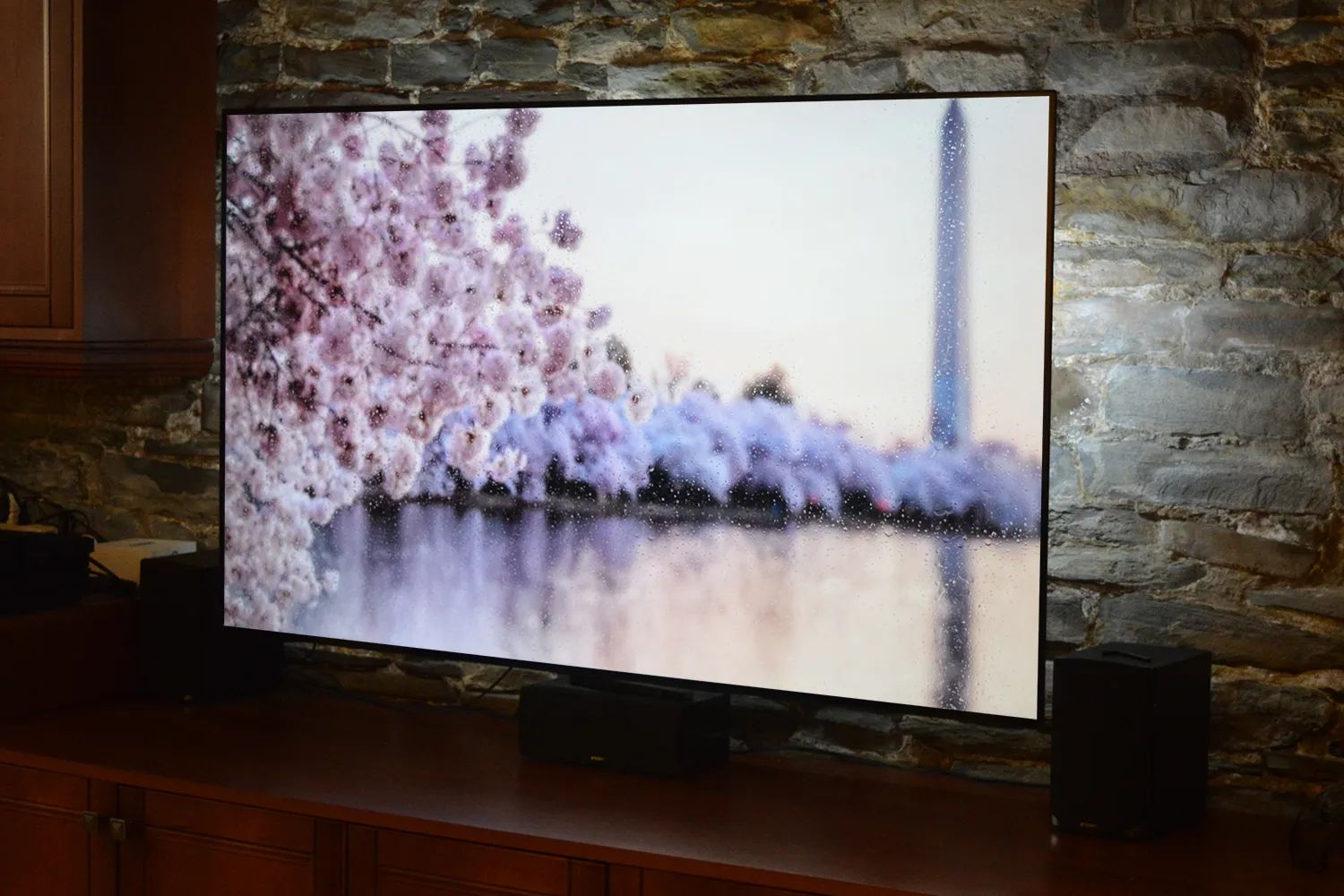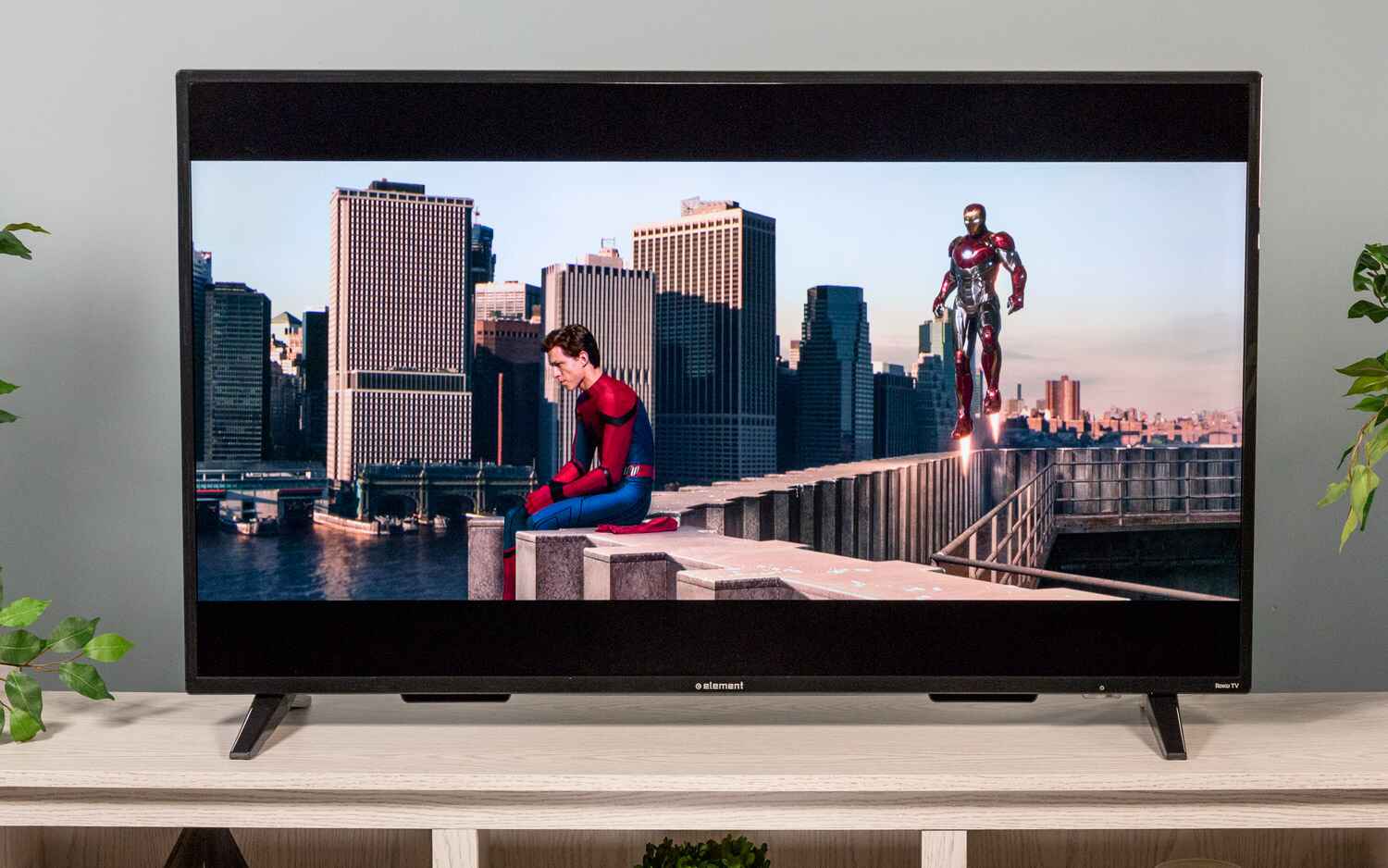Introduction
Welcome to the world of LED TVs! In this article, we will explore the fascinating technology behind LED TVs, their advantages, different types, and the key features to consider when buying one. LED TVs have revolutionized the way we experience television, offering stunning picture quality and an immersive viewing experience.
LED stands for Light Emitting Diode, and LED TVs are a type of television display that utilizes LEDs as a backlight source. Compared to traditional LCD TVs, LED TVs offer several advantages, including improved brightness, contrast, and energy efficiency. They have quickly become the preferred choice for consumers looking for the best visual experience in their homes.
Understanding how LED TVs work is essential to appreciate their superior performance. Unlike LCD TVs, which use fluorescent lamps as a backlight source, LED TVs use an array of small, light-emitting diodes. These diodes emit light when an electric current passes through them, illuminating the screen and creating vibrant colors and sharp images.
LED TVs come with various features and specifications to suit different preferences and viewing needs. Whether you’re a sports enthusiast, a movie lover, or a gamer, there’s an LED TV out there that can enhance your entertainment experience. From screen size and resolution to smart capabilities and connectivity options, we’ll explore all the factors you should consider when purchasing an LED TV.
Before delving into the intricacies of LED TVs, let’s address some common misconceptions. Despite their name, LED TVs do not have individual LEDs for each pixel like OLED TVs. Instead, they use LED backlighting behind an LCD panel. This misconception often leads to confusion about the difference between LED and OLED displays, which we will clarify later in the article.
So, if you’re ready to dive deeper into the world of LED TVs and discover how this technology can transform your viewing experience, let’s get started!
What Does LED Stand For?
LED is an acronym for Light Emitting Diode. A diode is a semiconductor device that allows the flow of electric current in one direction. In the case of LEDs, when an electric current passes through them, they emit light as a result of the movement of electrons.
LED technology has been around for decades, initially used in electronic displays and indicator lights. However, it wasn’t until the early 2000s that LEDs started to be used as a backlight source in television displays, revolutionizing the industry.
Compared to traditional televisions that used fluorescent lamps as a backlight source, LED TVs offered numerous advantages. LEDs are much smaller in size, allowing for a more compact and sleek design. They also consume significantly less power, resulting in greater energy efficiency. This not only reduces electricity bills but also contributes to a greener environment.
Another significant advantage of LEDs is their ability to provide better control over brightness and contrast levels. Unlike fluorescent lamps, which provide a uniform level of backlighting across the entire screen, LED backlighting allows for dynamic control of individual sections or zones of the display. This enhances the overall picture quality, providing deeper blacks, brighter whites, and a more detailed and realistic image.
LEDs can also produce a wider range of colors, resulting in a more vibrant and immersive viewing experience. This is achieved through the use of RGB (red, green, blue) LEDs or white LEDs combined with a color filter. The ability to reproduce a wider spectrum of colors ensures that the images displayed on the screen are more lifelike and accurate.
As LED technology continues to evolve, we are witnessing advancements such as local dimming, where specific areas of the display can be dimmed or brightened independently to enhance contrast and improve black levels even further. This results in a more dynamic and visually captivating experience.
Overall, LED technology has transformed the television industry, providing consumers with televisions that offer superior image quality, energy efficiency, and sleek designs. Whether you’re watching your favorite movie, catching up on the latest sporting event, or playing video games, LED TVs deliver stunning visual performance that truly brings content to life.
How Do LED TVs Work?
LED TVs work on the principle of using light-emitting diodes (LEDs) as a backlight source to illuminate the screen. Unlike traditional LCD TVs that use fluorescent lamps, LED TVs employ an array of small LEDs positioned behind the LCD panel.
When an electric current passes through the LEDs, they emit light. The light generated by the LEDs is then diffused and distributed across the screen using a combination of light guides and diffusers. This ensures that the entire display is uniformly illuminated.
One of the key advantages of LED backlighting over traditional fluorescent lamps is the ability to control individual sections or zones of the display. LED TVs utilize various techniques for this, such as edge-lit and direct-lit LED backlighting.
In edge-lit LED TVs, the LEDs are placed along the edges of the screen. The light emitted by these edge-mounted LEDs is then guided across the display using light guides and diffusers. This setup allows for a thinner and more lightweight TV design. However, one drawback is that the control over individual zones is limited, resulting in less precise local dimming capabilities.
Direct-lit LED TVs, on the other hand, feature LEDs positioned directly behind the LCD panel. This configuration provides more precise control over individual sections of the screen, allowing for better contrast and black levels. As a result, direct-lit LED TVs are often preferred by those who prioritize picture quality.
Moreover, some advanced LED TVs employ full-array LED backlighting with local dimming. In this setup, the LEDs are evenly distributed across the entire back panel of the TV. This enables precise control over individual zones, where certain LEDs can be dimmed or turned off to display deeper blacks and enhance contrast. Full-array LED TVs with local dimming offer superior picture quality, but they tend to be more expensive compared to edge-lit or direct-lit models.
LED TVs also utilize LCD (liquid crystal display) technology in conjunction with the LED backlighting. The LCD panel consists of millions of tiny liquid crystal cells that can change their transparency to control the amount of light passing through. When an electric current is applied to the liquid crystal cells, they twist and align to either block or allow the light emitted by the LEDs to pass through. This modulation of light results in the creation of images on the screen.
In summary, LED TVs employ LEDs as the backlight source to illuminate the display and utilize LCD technology for image formation. The combination of these technologies enables LED TVs to deliver exceptional picture quality, vibrant colors, and precise control over brightness and contrast levels, enhancing the overall viewing experience.
Advantages of LED TVs
LED TVs offer a range of advantages over other types of televisions, making them a popular choice among consumers. Let’s explore some of the key benefits of LED TVs:
1. Superior Picture Quality: LED TVs boast excellent picture quality, thanks to their ability to produce bright and vibrant colors. The dynamic control of individual sections or zones of the display allows for deeper blacks, brighter whites, and improved contrast. The result is a more lifelike and immersive viewing experience.
2. Energy Efficiency: LED backlighting is much more energy-efficient compared to conventional fluorescent lamps used in LCD TVs. LEDs consume less power, resulting in reduced electricity usage and lower energy bills. This not only benefits your wallet but also reduces environmental impact.
3. Slim and Sleek Design: LED TVs are known for their slim and sleek profiles. The smaller size of LEDs allows for a thinner TV design, making them aesthetically pleasing and less obtrusive in your living space. LED TVs can be wall-mounted or placed on a stand, providing flexibility in terms of placement.
4. Wide Color Gamut: LED TVs can produce a wider range of colors, resulting in more accurate and vibrant color reproduction. Whether you’re watching nature documentaries or action-packed movies, LED TVs deliver vivid and true-to-life colors that enhance your viewing pleasure.
5. Long Lifespan: LED technology has a longer lifespan compared to traditional fluorescent lamps. LEDs can last for thousands of hours, which translates to many years of usage before they need to be replaced. This durability ensures that your investment in an LED TV will continue to provide a high-quality viewing experience for years to come.
6. Faster Response Time: LED TVs typically have faster response times compared to other types of displays. This means that the images on the screen change quickly, resulting in smoother motion and less motion blur. This is particularly beneficial for watching fast-paced action scenes or playing video games.
7. Enhanced Viewing Angles: LED TVs offer wider viewing angles, allowing you to enjoy consistent picture quality from various positions in the room. This is especially useful when you have a large group of people watching TV together, as everyone can have a clear view regardless of their seating position.
Overall, LED TVs combine superior picture quality, energy efficiency, sleek design, and advanced features to offer an enhanced and immersive viewing experience. Whether you’re a movie enthusiast, a sports fan, or a gaming enthusiast, LED TVs provide the perfect platform to enjoy your favorite content with stunning clarity and vibrant colors.
Different Types of LED TVs
LED TVs come in various types, each offering unique features and functionalities to cater to different viewing preferences. Let’s explore the different types of LED TVs available:
1. Edge-lit LED TVs: Edge-lit LED TVs have LEDs positioned along the edges of the screen. The light emitted by these edge-mounted LEDs is then spread across the display using light guides and diffusers. This design allows for a thinner and more lightweight TV, making it ideal for wall-mounting. However, edge-lit LED TVs generally have limited control over local dimming, resulting in slightly lower contrast levels compared to other types.
2. Direct-lit LED TVs: Direct-lit LED TVs feature LEDs positioned directly behind the LCD panel. This configuration provides more precise control over individual sections or zones of the display, allowing for better contrast and black levels. Direct-lit LED TVs are often favored by those who prioritize picture quality and are commonly found in high-end models.
3. Full-Array LED TVs: Full-array LED TVs have LEDs distributed evenly across the entire back panel of the TV. This setup provides more precise control over individual zones, allowing for enhanced contrast and better local dimming capabilities. Full-array LED TVs deliver superior picture quality, especially in terms of deep blacks and vibrant colors. However, they tend to be more expensive compared to edge-lit or direct-lit models.
4. LED TVs with Local Dimming: Local dimming is a feature found in many high-end LED TVs. It allows specific areas or zones of the display to be dimmed or brightened independently to achieve deeper blacks and enhance contrast. LED TVs with local dimming provide more dynamic and realistic images compared to those without this feature. There are different levels of local dimming available, ranging from basic to advanced, depending on the TV model.
5. Smart LED TVs: Smart LED TVs are equipped with internet connectivity and built-in smart features. These TVs allow you to access the internet, stream content from popular services like Netflix and YouTube, and even download apps. Smart LED TVs eliminate the need for additional streaming devices, providing a convenient all-in-one solution for accessing a variety of online content.
6. Curved LED TVs: Curved LED TVs feature a curved screen that is designed to provide a more immersive viewing experience. The curvature of the screen is intended to create a sense of depth and draw the viewer into the image. Curved LED TVs are often associated with wider viewing angles and a more cinematic feel. However, it’s a matter of personal preference, and some viewers may not find the curved screen as appealing.
7. OLED TVs: While not technically LED TVs, OLED (Organic Light Emitting Diode) TVs are worth mentioning in relation to LED TVs. OLED TVs use organic compounds that emit light when an electric current is applied. Unlike LED TVs that utilize LED backlighting, OLED TVs individually control each pixel, resulting in perfect black levels, infinite contrast ratios, and exceptional color accuracy. OLED TVs are known for their stunning picture quality and are considered a premium option.
When choosing an LED TV, consider your specific needs and preferences. Whether you prioritize picture quality, slim design, smart features, or a curved screen, there is an LED TV out there that will meet your requirements and enhance your viewing pleasure.
Features to Consider When Buying an LED TV
When buying an LED TV, there are several important features to consider to ensure you choose the right model that suits your needs and provides an enjoyable viewing experience. Let’s explore these key features:
1. Screen Size: Determine the screen size that would be suitable for your space and viewing preferences. Consider factors like the distance from your seating area to the TV and the available wall or cabinet space. LED TVs come in a range of sizes, from compact models around 32 inches to larger screens above 75 inches.
2. Resolution: LED TVs offer various resolutions, such as Full HD (1080p) and Ultra HD (4K). Higher resolution TVs provide sharper and more detailed images, especially for larger screen sizes. If you enjoy watching high-definition content, you may want to consider a 4K LED TV for a more immersive experience.
3. HDR (High Dynamic Range): HDR technology enhances the contrast and color accuracy of the image, resulting in more vibrant and lifelike visuals. Look for an LED TV that supports HDR formats like HDR10 or Dolby Vision for a more dynamic and realistic picture quality.
4. Refresh Rate: The refresh rate refers to the number of times the image refreshes on the screen per second. A higher refresh rate reduces motion blur, making fast-paced action scenes smoother. Look for an LED TV with a refresh rate of at least 60Hz or higher.
5. Smart Features: Consider whether you want a smart TV with built-in Wi-Fi connectivity and access to streaming services. Smart LED TVs allow you to browse the internet, stream content from popular platforms, and download apps directly on your TV, providing a versatile and convenient entertainment experience.
6. Connectivity: Check the available ports and connectivity options on the LED TV. Look for HDMI ports to connect external devices like gaming consoles, Blu-ray players, or soundbars. USB ports are useful for playing media from external storage devices. Additionally, consider Wi-Fi capabilities for wireless connectivity.
7. Audio Quality: While LED TVs are known for their stunning visuals, audio quality is also crucial for a fulfilling viewing experience. Take into account the built-in speakers and consider whether external audio devices or a soundbar is needed to enhance the sound quality.
8. Design and Aesthetics: LED TVs come in various designs, from slim bezels to sleek stands. Consider the aesthetics and whether the TV’s design complements your living space.
9. Price and Warranty: Set a budget before purchasing an LED TV and compare prices across different brands and models. Consider the warranty offered by the manufacturer to ensure peace of mind for any potential technical issues.
By considering these important features when buying an LED TV, you can make an informed decision and select a model that delivers optimal picture quality, functionality, and overall satisfaction.
Common Misconceptions About LED TVs
LED TVs have gained immense popularity in recent years, but there are still some misconceptions surrounding this technology. Let’s debunk some of the common misconceptions about LED TVs:
1. LED TVs have individual LEDs for each pixel: One prevalent misconception is that LED TVs have individual LEDs for each pixel, similar to OLED TVs. In reality, LED TVs use an array of LEDs as a backlight source, which illuminate the LCD panel that forms the images. The LEDs are positioned behind the LCD panel and provide the lighting, while liquid crystals control the light flow to create the images.
2. LED TVs don’t produce true blacks: Another misconception is that LED TVs cannot produce true blacks. While it is true that LED backlighting doesn’t completely turn off like OLED pixels, advanced LED TVs employ technologies like local dimming to enhance black levels. Local dimming selectively adjusts the brightness of specific areas of the screen, resulting in deeper blacks and better contrast ratios.
3. All LED TVs suffer from backlight bleeding: Backlight bleeding is when light from the LEDs leaks through the LCD panel, resulting in uneven backlighting and potentially affecting the accuracy of dark scenes. While backlight bleeding can occur in some LED TVs, it is not a universal issue. Higher-end LED TVs are designed with better backlighting systems to minimize or eliminate backlight bleeding, providing a more uniform viewing experience.
4. LED TVs consume a significant amount of power: LED TVs are often praised for their energy efficiency, contrary to the misconception that they consume a significant amount of power. Compared to older CRT TVs or even LCD TVs, LED TVs consume considerably less energy. The smaller size and efficiency of LEDs contribute to lower overall power consumption, making LED TVs an environmentally friendly choice.
5. All LED TVs have the same picture quality: LED TVs come in various models and offer different picture quality levels. Factors like the type of LED backlighting, local dimming capabilities, image processing technologies, and overall display quality can greatly impact the picture performance. Higher-end LED TVs often feature advanced technologies that deliver superior color accuracy, contrast, and image sharpness.
6. LED TVs have poor viewing angles: While it’s true that viewing angles can affect image quality in some LED TVs, this is not a universal issue. Most modern LED TVs are designed with improved viewing angles. However, it’s still advisable to consider the optimal seating positions for the best viewing experience, especially in larger rooms or when hosting gatherings.
7. LED TVs are outdated: LED TVs have been around for a while, but they are far from outdated. LED technology continues to advance, with improvements in picture quality, energy efficiency, and overall performance. LED TVs still form a significant portion of the market, offering a wide range of options to cater to different budgets and viewing preferences.
By dispelling these misconceptions, it becomes clear that LED TVs are a reliable and popular choice for anyone seeking excellent picture quality, energy efficiency, and a range of features and sizes. As with any product, it is essential to do research and consider specific models’ characteristics to make an informed purchase decision.
LED TV vs. LCD TV: What’s the Difference?
LED TVs and LCD TVs are two popular types of television displays, but they differ in the way they produce images. Understanding the difference between LED and LCD technology can help you make an informed decision when purchasing a new TV. Let’s explore the distinctions between LED TVs and LCD TVs:
1. Backlighting: The major difference between LED and LCD TVs lies in their backlighting technology. LCD TVs use fluorescent lamps (CCFLs) as the backlight source behind the LCD panel. On the other hand, LED TVs use an array of light-emitting diodes (LEDs) as the backlight source. This distinction results in variations in picture quality and other features.
2. Picture Quality: LED TVs generally offer superior picture quality compared to LCD TVs. The use of LEDs as the backlight source allows for better control over brightness, contrast, and color accuracy. LED TVs produce deeper blacks, brighter whites, and more vibrant colors, resulting in a more vivid and realistic viewing experience.
3. Energy Efficiency: LED TVs are more energy-efficient than LCD TVs. LED backlighting consumes less power than traditional fluorescent lamps used in LCD TVs. LED TVs allow for better control of individual sections or zones of the display, resulting in lower power consumption and greater energy savings. This not only reduces electricity bills but also contributes to a more environmentally friendly choice.
4. Design: LED TVs are known for their slim and sleek designs. The smaller size of LED backlighting allows for thinner and lighter TV panels, making them more aesthetically pleasing and versatile to fit into any space. LCD TVs, due to the larger fluorescent lamps used as backlighting, tend to have a bulkier design compared to LED TVs.
5. Price: In general, LED TVs are priced slightly higher than LCD TVs due to their advanced backlighting technology and improved picture quality. However, as LED technology has become more widespread, the price gap between the two types of TVs has significantly reduced. It is now possible to find affordable LED TVs that offer excellent value for the price.
6. Viewing Angles: LED TVs generally have wider viewing angles than LCD TVs. This means that viewers can enjoy consistent image quality and color accuracy from various positions in the room. LCD TVs may experience color shifting or loss of image quality when viewed from off-center angles.
7. Lifespan: LED TVs typically have a longer lifespan compared to LCD TVs. The fluorescent lamps used in LCD TVs may dim or require replacement over time. In contrast, LEDs have a longer lifespan, providing many years of reliable and consistent performance.
While LED TVs offer significant advantages over LCD TVs, it’s worth noting that some LCD TVs still provide good picture quality and affordability, making them suitable for those on a tighter budget. When considering whether to purchase an LED TV or an LCD TV, it ultimately comes down to your preferences, budget, and the desired viewing experience.
LED TV vs. OLED TV: Which is Better?
LED TVs and OLED TVs are two popular options in the television market, each with its own unique capabilities and advantages. Understanding the differences between these technologies can help you determine which type of TV is better suited to your needs. Let’s compare LED TVs and OLED TVs:
1. Picture Quality: One of the significant factors that distinguish LED TVs and OLED TVs is the picture quality. OLED (Organic Light Emitting Diode) TVs are renowned for their exceptional picture quality. Each pixel in an OLED display emits its own light, resulting in perfect blacks, infinite contrast ratios, and stunning color accuracy. LED TVs, on the other hand, use LED backlighting behind an LCD panel. While LED TVs offer impressive picture quality, they do not produce the same level of true blacks and contrast as OLED TVs.
2. Contrast Ratio: OLED TVs have a distinct advantage when it comes to contrast ratio. The ability of OLED pixels to turn off individually allows for true blacks, as each black pixel emits no light. This creates a remarkable contrast between dark and bright areas, resulting in a more immersive viewing experience. LED TVs, while they can utilize technologies like local dimming to enhance contrast, cannot achieve the same level of contrast as OLED TVs.
3. Viewing Angles: OLED TVs offer wider viewing angles compared to LED TVs. OLED pixels emit light directly, providing consistent image quality and color accuracy even when viewed from off-center angles. LED TVs, especially those with older LCD technology, may experience color shifting or loss of image quality when viewed from extreme angles.
4. Energy Efficiency: LED TVs have an advantage over OLED TVs in terms of energy efficiency. LED backlighting is more energy-efficient compared to OLED technology. LEDs consume less power, resulting in lower energy consumption and reduced electricity bills. OLED TVs, while they provide superior picture quality, tend to consume more power due to the nature of their technology.
5. Lifespan: LED TVs generally have a longer lifespan compared to OLED TVs. OLED pixels degrade over time, resulting in potential image retention or burn-in issues with static images displayed for extended periods. LED TVs do not have the same concerns, as the LEDs used for backlighting have a much longer lifespan. However, it’s worth noting that modern OLED TVs have made significant improvements in this regard and come with features to mitigate burn-in risks.
6. Price: In terms of cost, LED TVs are generally more affordable than OLED TVs. LED TV technology has been around for longer and is more widespread, allowing for a wider range of options across different price points. OLED TVs, being a more advanced technology, tend to come with a higher price tag. However, as OLED technology continues to evolve, prices have become more competitive over time.
Both LED and OLED TVs have their strengths and suit different preferences. If you prioritize stunning picture quality with true blacks and infinite contrast, OLED TVs are the superior choice. However, if you are looking for a more budget-friendly option with a longer lifespan and better energy efficiency, LED TVs are worth considering. Ultimately, the decision between LED and OLED TVs comes down to your priorities, budget, and the viewing experience you desire.
Conclusion
LED TVs have transformed the way we experience television, delivering stunning picture quality, energy efficiency, and a range of features to enhance our viewing pleasure. With their superior brightness, vibrant colors, and the ability to produce deep blacks, LED TVs have become the preferred choice for consumers seeking exceptional visual performance.
LED stands for Light Emitting Diode, and LED TVs utilize these diodes as a backlight source behind the LCD panel. This technology enables precise control over brightness, contrast, and color accuracy, resulting in a more immersive and realistic viewing experience.
When considering an LED TV, there are several essential features to consider. Factors such as screen size, resolution, HDR support, refresh rate, smart features, connectivity options, and audio quality all play a role in selecting the perfect TV for your needs.
It is important to address common misconceptions about LED TVs. It is a myth that LED TVs have individual LEDs for each pixel, when in fact they use LEDs for backlighting behind the LCD panel. LED TVs do not suffer from poor black levels, thanks to advanced technologies like local dimming that enhance contrast. Additionally, LED TVs are energy-efficient and offer a longer lifespan compared to other types of televisions.
Comparison with other TV technologies highlights the advantages of LED TVs. LED TVs outshine LCD TVs with their superior picture quality, energy efficiency, and wide color gamut. While OLED TVs provide unmatched picture quality with perfect blacks and infinite contrast, LED TVs offer a more budget-friendly option with longer lifespan and better energy efficiency.
In conclusion, LED TVs have revolutionized the television industry with their impressive visual performance, energy efficiency, and stylish design. Whether you’re immersing yourself in the latest blockbuster movie or streaming your favorite shows, LED TVs provide a captivating and immersive viewing experience that will elevate your entertainment to new heights.







